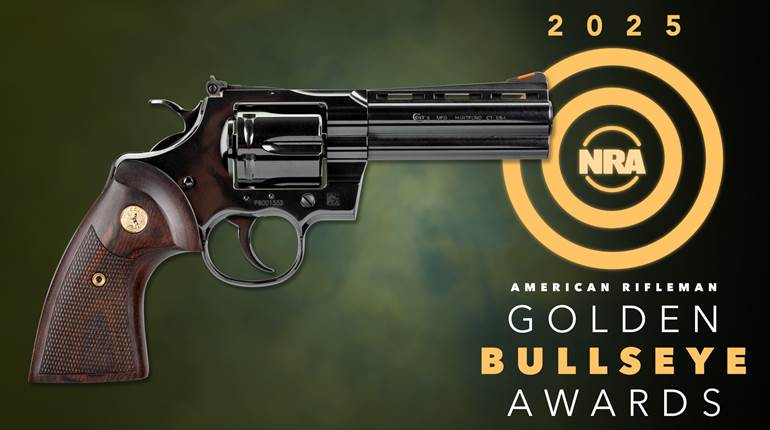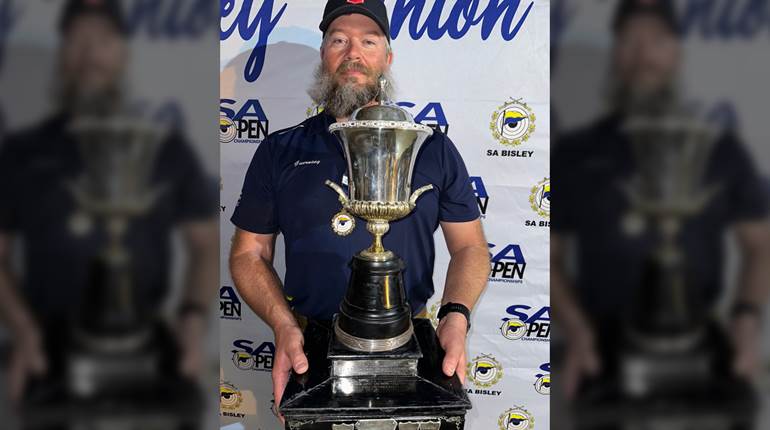The Lewis light machine gun was developed by U.S. Army Col. Isaac Newton Lewis in 1911, based off the inner working of a previous machine gun attempt invented by Samuel McClean. In particular, Newton built off of McClean's use of a gas system to drive the action along with the use of a top-mounted drum magazine with his own machine gun design. Col. Lewis approached the U.S. Ordnance board to offer the new design to the United States, but was rejected by Gen. William Crozier, Chief of the Ordnance Department.
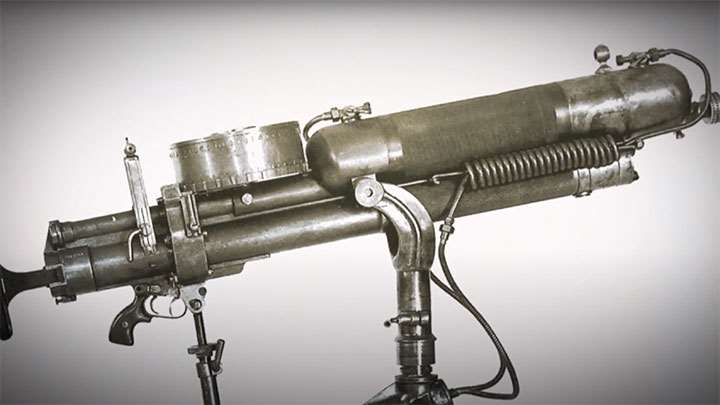
The rejection of his design by Gen. Crozier turned Col. Lewis away from the United States, and he moved to Belgium in 1913 to continue work on and sales of his new patented machine gun. Col. Lewis worked closely with the British manufacturer Birmingham Small Arms to develop the new light machine gun around the .303 British cartridge, with the British firm purchasing the license to produce it in England in 1914.
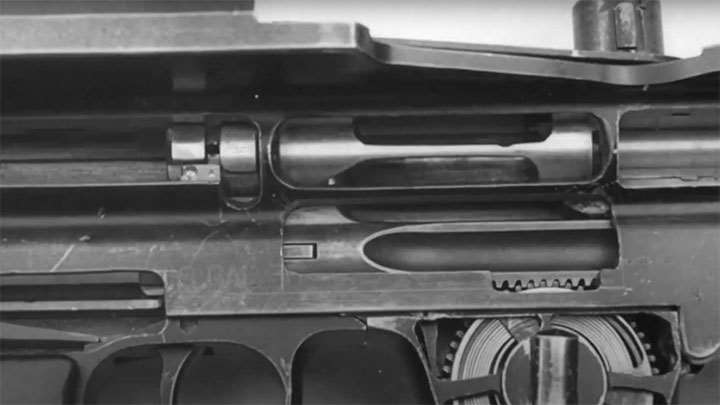
The Lewis light machine gun was lighter than other machine guns in the British inventory, and at 28 lbs., could be carried by a single soldier instead of requiring a crew to operate. The Lewis is a gas-operated, air-cooled light machine gun. A gas block on the barrel taps off a portion of the expanding gas in the barrel to drive the piston rearward. The piston rod uses a helical cam surface to rotate and unlock the bolt's three locking lugs. A winding clock-spring located at the bottom of the receiver then drove the bolt and operating piston back into lock, chambering the next round.
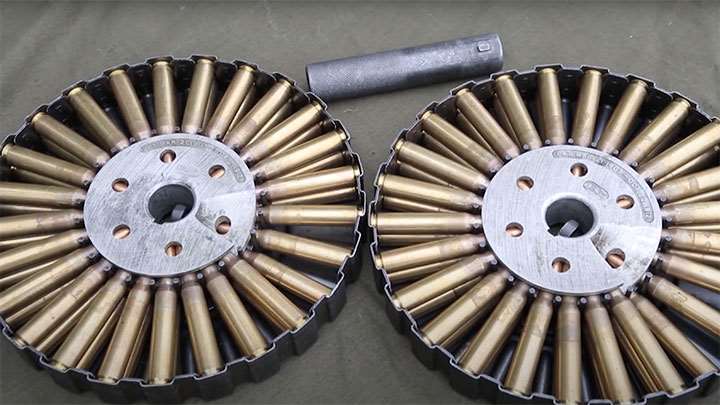
The Lewis feds from a top-mounted, drum-shaped 47-round pan magazine which is spun around during operation to feed in ammunition. A series of cams and mechanical arms connected to the action spin the magazine and load ammunition into the chamber. The barrel was cooled using a large heat-sink fin housed inside the hollow barrel shroud and the air flowing through the shroud when a round was fired. Despite the Lewis being a complex design, the British used it to good effect on World War I battlefields, where it proved reliable in its role.
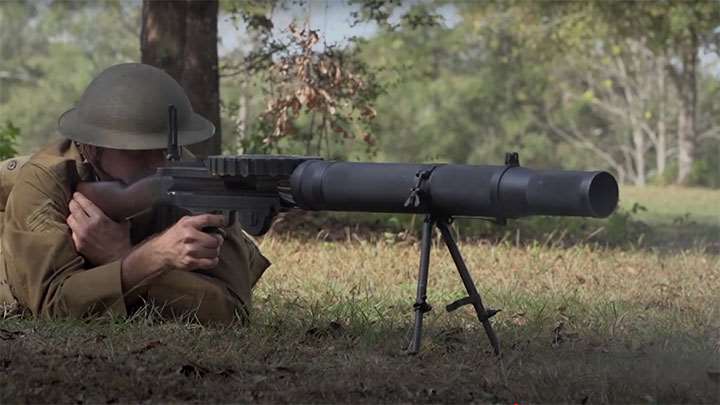
To help with wartime production, the U.S. manufacturer Savage was contracted to make the Lewis in .303 British for British use. It was during this time that Savage started working with the Lewis design to covert it to the .30-'06 Sprg. cartridge for possible use by the U.S. This was a difficult conversion, as the complex workings of the feed system were carefully machined and designed around the .303 British cartridge. Savage rushed the process in redesigning the Lewis for U.S. use and as a result did not get all the parts adequately reworked.
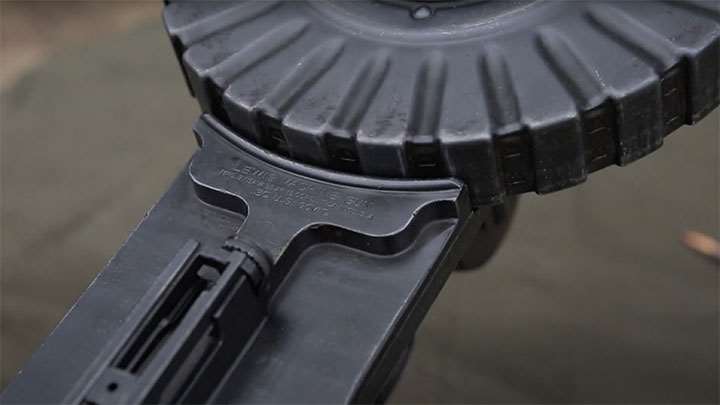
When the United States entered the war in 1917, it was sorely lacking in up-to-date machine guns. There were a small number of domestically-produced, stripper-fed M1909 Hotchkiss machine guns in service as a light machine gun, which proved less than adequate for the conditions of World War I. The lack of a reliable and up-to-date light machine gun design meant that U.S. soldiers had to rely on foreign-made light machine gun designs like the French CSRG Chauchat. This helped turn U.S. attention to the Lewis.
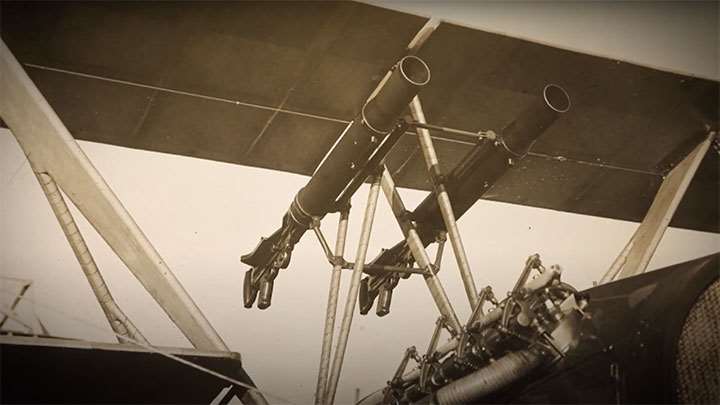
While exhibiting nicer build quality and finish than the British examples, the American Lewis had functional issues stemming from the design alterations that were not properly worked out during Savage's design rework. Never the less, The Savage .30-'06 Sprg. version of the Lewis gun was adopted by the U.S. as the Model of 1917 Lewis. The M1917 Lewis was sent with U.S. Marines to Europe during World War I and trained with, but the guns were ultimately taken from the marines to be used on aircraft. There was a high demand for Lewis guns in the air service at the time, where it was used as an offensive aircraft armament.
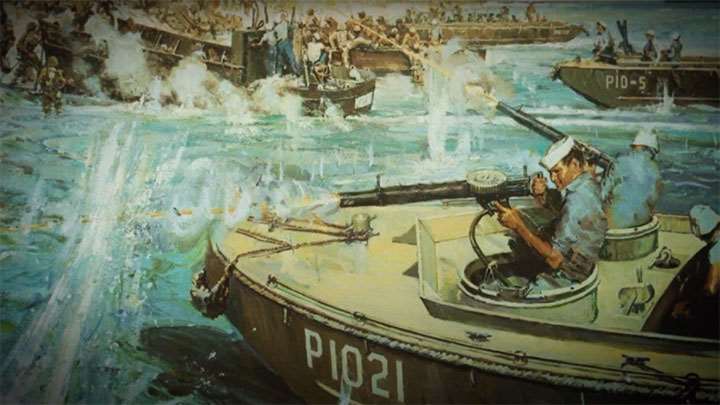
After World War I, the M1917 Lewis continued to see service with the U.S. Navy, Coast Guard and Marine Corps. The Marines made good use of the Lewis gun during the inter-war period in places like Haiti and Nicaragua. The M1917 Lewis was still in U.S. inventory and use during World War II as well as a light machine gun and fixed mount machine gun for landing craft and patrol boats. The only Coast Guard Medal of Honor was earned with a M1917 Lewis in Sept., 1942 by Douglas Munro as he provided cover for landing craft that were trying to pick up U.S. Marines at Guadalcanal.
To watch complete segments of past episodes of American Rifleman TV, go to americanrifleman.org/artv. For all-new episodes of ARTV, tune in Wednesday nights to Outdoor Channel 8:30 p.m. and 11:30 p.m. EST.
